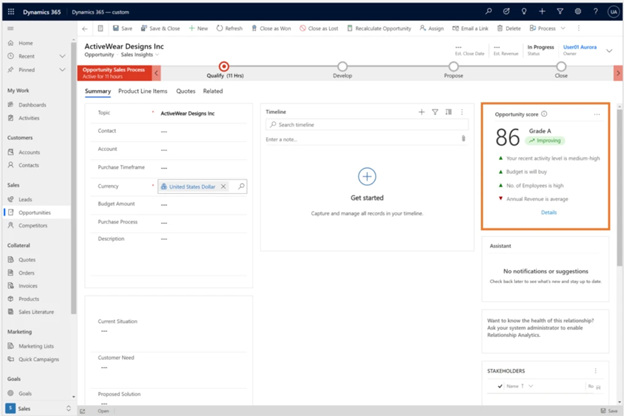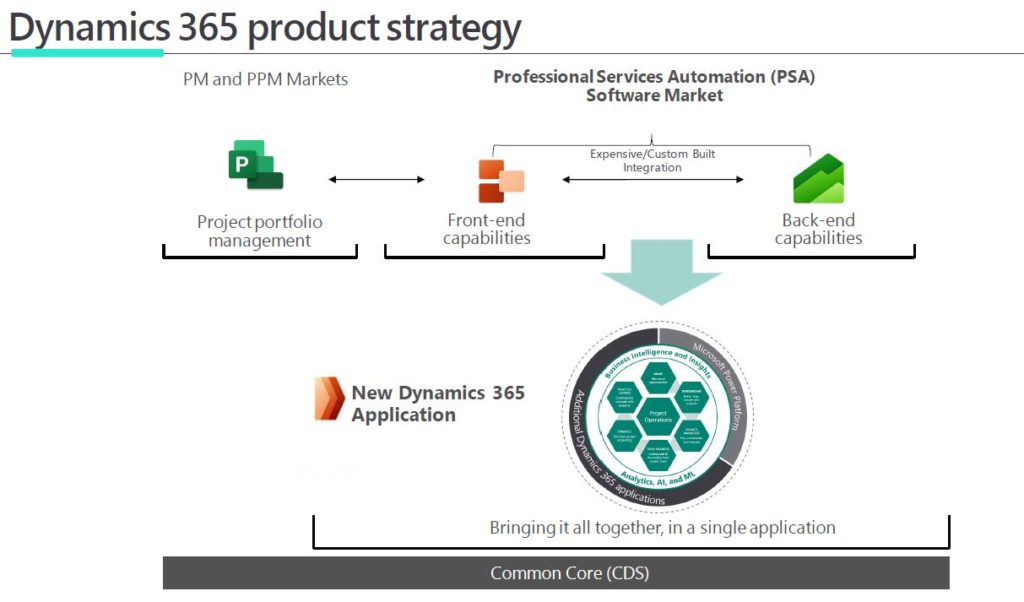Dec 11, 2020
Microsoft has developed new capabilities in Dynamics 365 to discover email messages, meetings, and
phone call activities related to an opportunity, and then to factor these signals into the score.
Capturing activities to determine opportunity health
A healthy opportunity will usually have activities happening in it like email messages, meetings, and phone
calls.
Many of our predictive opportunity scoring customers were gathering these signals manually to determine
opportunity health.
Microsoft has replaced the need for customers to manually track activities by using AI to gather activities,
approving prediction accuracy, and compensating for cases where sellers do not diligently update the
opportunity fields.
This can help the seller make more educated choices about what the best next action might be.
For example, a high level of activity may indicate that the opportunity is heating up and is worth attention.
Likewise, an opportunity with where the activity level is low may need immediate attention.
Here’s an example showing the opportunity score improving

Here's an example showing the opportunity score declining:

Connecting opportunities with activities
In addition to activities that are explicitly connected to opportunities, an algorithm is developed to infer
indirect connections between activities and opportunities, using Contact and Account activity timelines.
Since these are not trivial connections (for example, an account may have multiple opportunities), AI is
assigning them appropriate predictive weights.
How the predictive opportunity scoring model is trained
First, we make sure, automatically, that the data we have is meaningful and contributing to the prediction.
Then we look at each recent activity level of every opportunity and try to find a correlation between this
signal and the likelihood of winning the opportunity.
After the model is trained, we can view the open opportunities in the system and give them a score based
on past examples.
What the AI does is learn how recent activity level affects the likelihood to win an opportunity in your
organization.
Nov 24, 2020
On November 1, 2020, Microsoft released Dynamics 365 Project Operations offers and removed Dynamics 365 Project Service Automation (PSA) for commercial customers.

What is changing?
DYNAMICS 365 PROJECT OPERATIONS
New application came on October 1, 2020. Going forward, all roadmap investments for the PSA software market will be done through this application.
DYNAMICS 365 PROJECT SERVICE AUTOMATION
There will not be any immediate disruption. Microsoft will work to transition you to at your pace. This service will continue running for customers on CSP until October 1, 2022 and EA until October 1, 2024, or until current contract ends, whichever comes first. Contract renewals will continue until October 1, 2021. Microsoft will offer a migration path to Project Operations. Current customers will be grandfathered into the new SKU and pricing.
PROJECT MANAGEMENT AND ACCOUNTING (PMA)
There will not be any immediate disruption. Microsoft will work to transition customers. SKU adjustments and entitlements for new customers will go into effect on October 1, 2020, moving from Finance to Project Operations. Microsoft will offer a migration path to Project Operations. Current customers will be grandfathered into the new SKU and pricing.
MICROSOFT PROJECT
Will be continued to be sold as PM and PPM solutions and common core capabilities Project for the web will incorporated natively into Dynamics 365 Project Operations.











